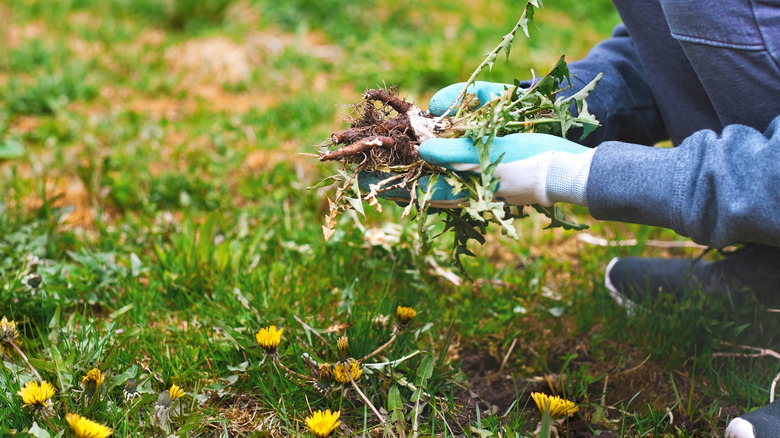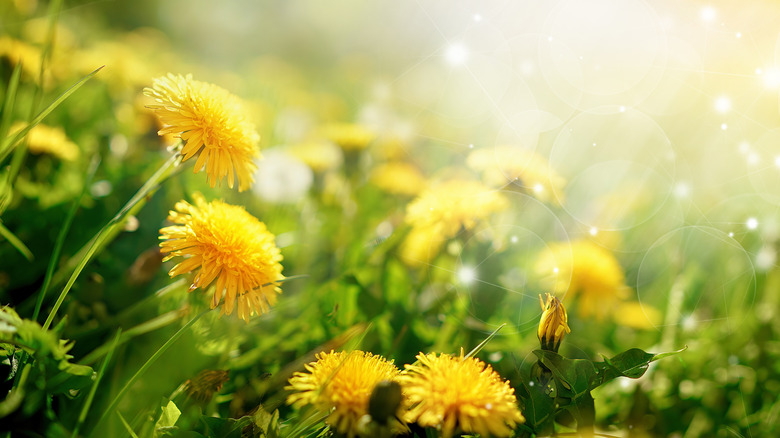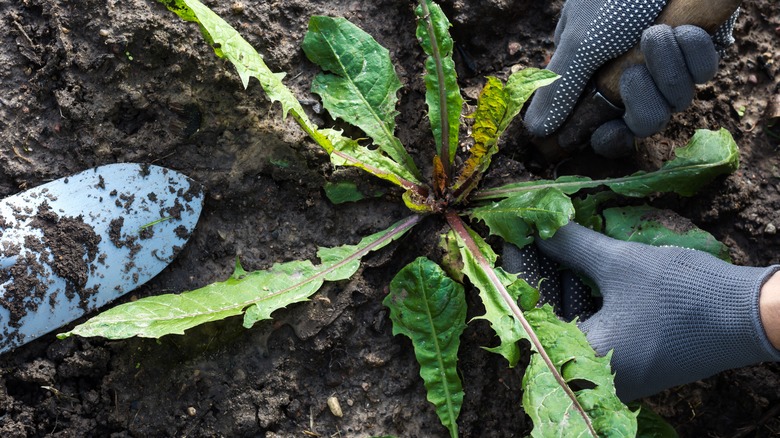Here's Why You Should Avoid Pulling Weeds From Dry Soil
Gardens with lush, thriving greenery are staples of welcoming homes. However, there are some plants that aren't so welcome: Weeds. Whether it's dandelions, crabgrass, ragweed, or a combination of common unwanted sprouts, weeds can quickly take over and jeopardize the health and aesthetic of your garden. While you may want to remove them the second they grow above the surface, be mindful of the condition of your soil. Pulling weeds when the ground is dry could result in missed roots and cause quick regrowth.
The saying "growing like a weed" is quite literal when it comes to the actual plants, which, to gardeners struggling to reestablish power over a weed-infested bed, seem to grow tenfold overnight. So, when you wake up and find that your flowerbed is (once again) covered in more weeds than flowers, it can be quite tempting to immediately start plucking, especially knowing the detriment they can cause to a healthy garden.
Why weeds should be removed
Different types of weeds can provide both biodiversity to a natural ecosystem and nutrients for the soil they reside in. However, they tend to bring more problems than they're worth. If these quick-growing plants are not managed or completely removed, they can easily overrun a garden. This means that the soil and space aboveground will be suffocated, and there will be little healthy space for plants, flowers, and vegetation to grow properly. In addition, weeds oftentimes host pathogens like bugs, which can spread insect-borne diseases throughout your garden and damage your plants.
These unwanted plants not only affect your garden's overall growth but can also be an eyesore. The last thing a gardener wants is to have precisely planted rows of vegetables interrupted by sporadically growing weeds. The absence of weeds gives a garden and its inhabitants the best chance of flourishing to their fullest potential.
How to remove them
Weeds have a major tendency to grow back, especially if just a small portion of the root or plant remains in the soil. The efficiency of removal depends on technique and the water concentration of the soil, which is why it's important to know when and how to remove them.
First, identify where the weeds are and differentiate them from the deliberate plants that you want to keep. Once you know where your plants stop, and the weeds begin, you'll have a much better handle at the beginning of the removal process.
Next, inspect the condition of your soil. If the soil is dry to the touch, use a garden hose to apply a generous amount of water to the soil, specifically where the roots of the weeds are. Or wait until you get a few inches of rain. Either way, you'll want enough water to soak the soil at least 6 inches below the surface. Once the soil is soft enough, get a solid grip on each weed by pulling at the bottom of the stem to ensure they come out in one piece.


